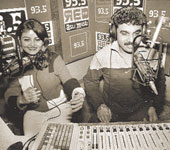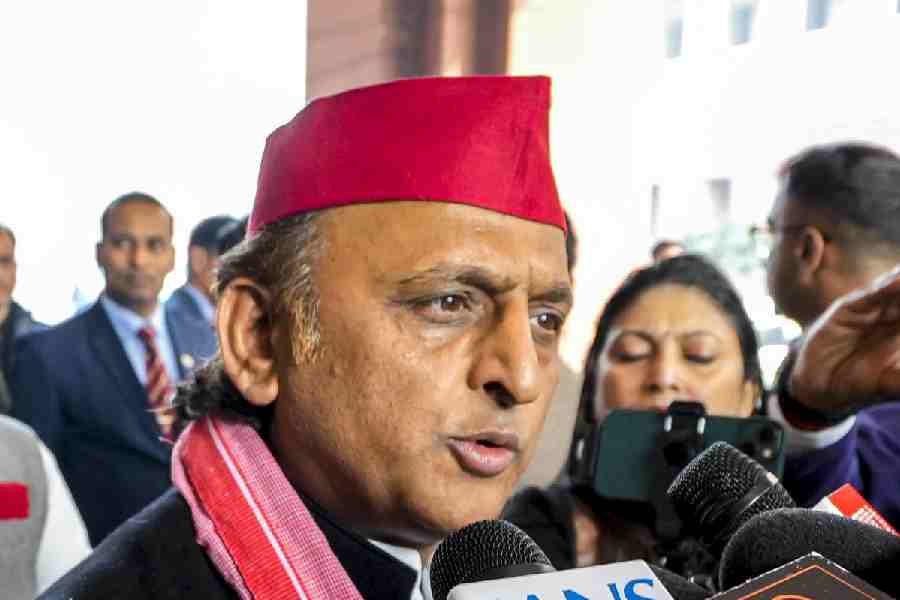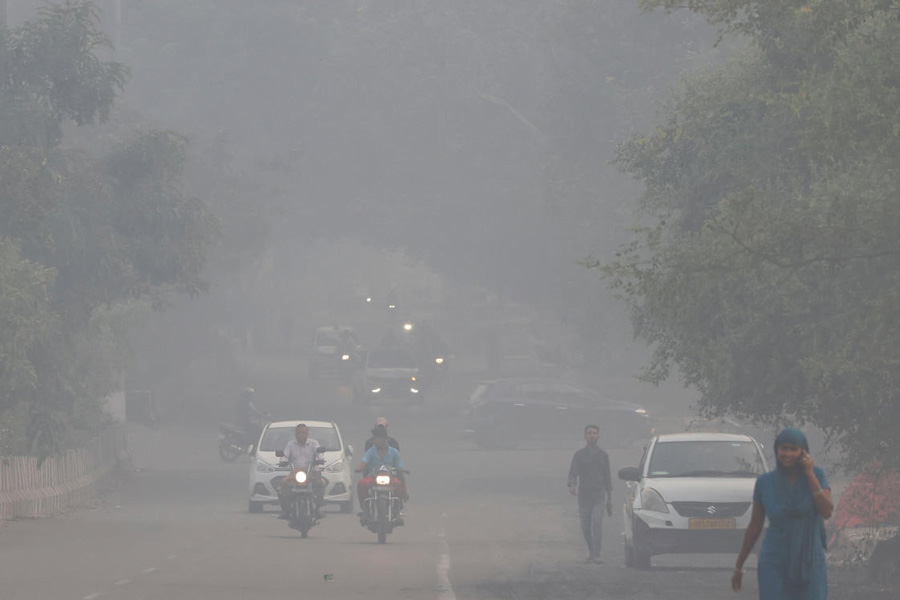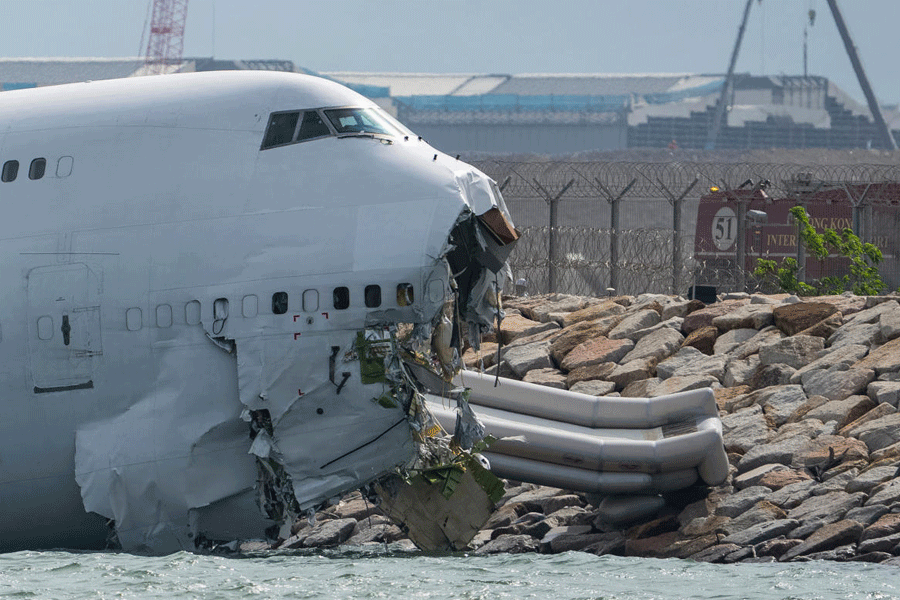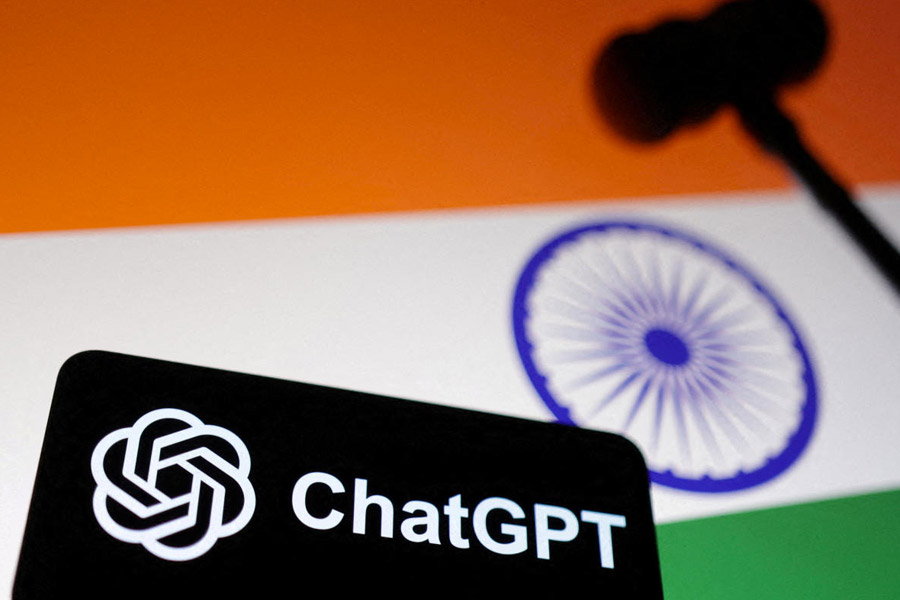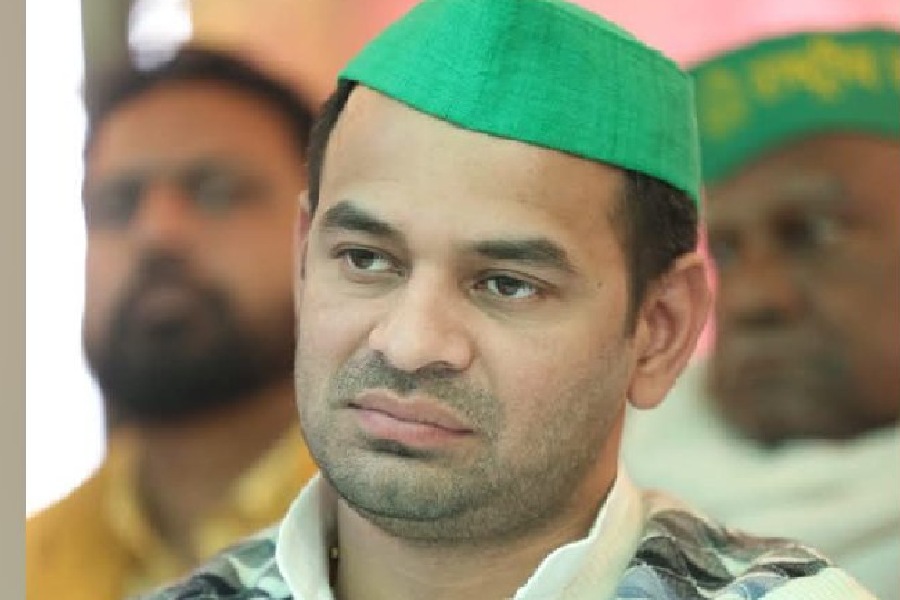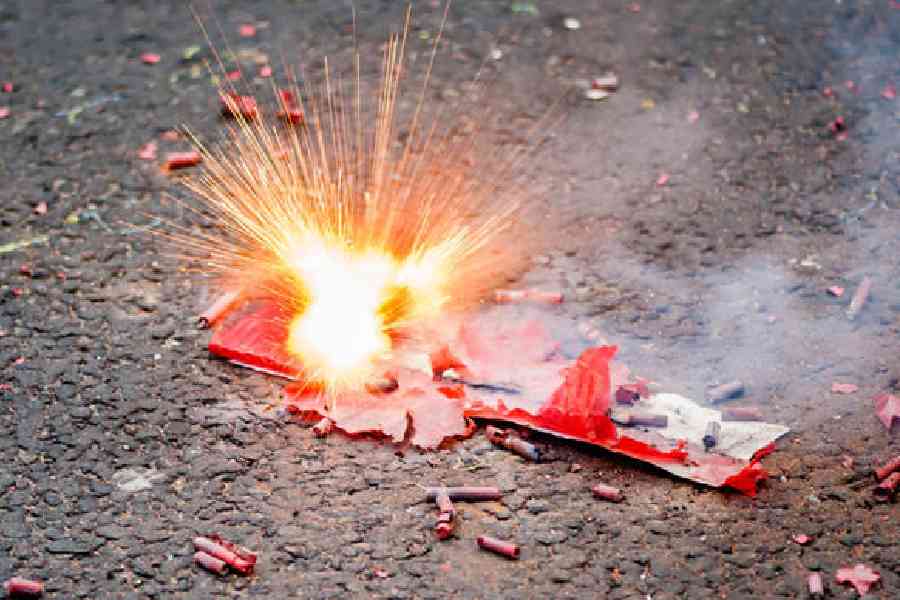|
|
 |
 |
 |
 |
| TALK, THE NEW-AGE MANTRA: (from top ) Pragya and Rakesh at the Red FM radio station; actor and TV anchor Shekhar Suman; a still from Phir Hera Pheri; radio jockey and TV anchor, Mir (photo: Subhendu Chaki); a girl chats on her cellphone |
It’s talk time, folks. Switch on the radio and you’ll hear the breathless prattle of a chatty radio jockey. Channel surf and you’ll be bombarded by talk shows. Go for a film and a garrulous Shah Rukh or Akshay Kumar will assault you with verbal salvos. Answer the phone, and a sunny voice will babble about new home loan schemes.
Talk shows, talkathons, new-age gurus, call centre conversations ? never ever has India witnessed such verbal diarrhoea. A nation once known for its meditative streak is all set for a makeover as the talkative Indian takes over.
Suddenly, there is an avalanche of talk all around. Cellphone companies lure you with tempting talk-time deals. Pop-up messages goad you to chat on the Internet. Suave talkers offer exclusive services to help you articulate your thoughts. Charismatic gurus like Deepak Chopra, Ravi Shankar and Ramdev specialise in long, metaphysical speeches. Silence, clearly, is no longer golden ? it’s talk that’s gilded.
Words sell. Market analysts, sociologists and trend experts attribute the word boom to wide exposure, increasing opportunities, fresh career avenues as well as the changing profile of the urban Indian consumer. They hold that India has entered a phase where talking is not only a cult phenomenon but also a confidence booster and image enhancer.
Take cinema, for instance. Gone are the days when a brooding Dilip Kumar or a tongue-tied Raj Kumar could keep you spellbound for three hours. Heroes now have to be silver-tongued to ensure a box-office hit. “Think of Shah Rukh Khan in Kal Ho Naa Ho, Aamir Khan in Dil Chahta Hai, Saif Ali Khan in Salaam Namaste or Akshay Kumar in Phir Hera Pheri. They keep talking incessantly and that’s what makes them warm and affable,” says Srinjoy Mitra, who is doing his doctorate on neuroinformatics from the Swiss Federal Institute of Technology in Zurich. “A reticent, thinking hero like Raaj Kumar or Dilip Kumar alienates and depresses you. They create a wall in between. A talkative one pulls down the wall between the viewer and hero.”
Ask director Karan Johar ? who’s churned out such super hits as Kal Ho Naa Ho and Kuch Kuch Hota Hai ? why his heroes talk so much, and he tells you, “Silence may speak the most. But I am yet to master that art in my films. I am perfectly happy with the way my heroes are: exuding warmth and emotion and expressing themselves through words.” Johar himself hosted a chat show till last year.
Perhaps that explains the results of a random sample survey conducted by The Telegraph among 100 people in the age group of 17-28 in Delhi, Mumbai and Calcutta. About 75 per cent of those polled said they prefer chatting to reading, listening to music or watching a film. “Talking is an art and it needs rigorous practice. Once you become a glib talker, you can be immensely popular among friends and relatives,” says 19-year-old Sohail Khan with a glint in his eyes. Sixty-seven per cent admitted to memorising quotable quotes and conversation templates before dating or attending office parties. Of those polled, 72 per cent believed that talking is the new mantra that can not only buy them love and charisma ? but also a job.
These days, you get paid to talk. A whole range of jobs has opened up where candidates need to master the art of glib talk. If you have a way with words, you can be an event anchor or a radio jockey, television presenter or stand-up comedian, speech writer or a spiritual guru.
Not surprisingly, job seekers are availing of hired services offered by wordsmiths such as Bangalore-based Jagdip Rathod and Nishant Goel. Both theatre activists, they train people on the right techniques of dialogue and delivery along with special skills of rambling on without sounding dreary.
Three years ago, the duo was perceptive enough to identify a potential clientele ready to purchase words. Today, they have several tested templates at their disposal, in keeping with the job profile. In the case of an anchor, they stress on the choice of words; for a speechwriter, lucid metaphors are given utmost priority; and in the case of radio jockeys, it’s the vivacious spirit that counts.
Of course, the experts stress that a lot of work goes into talk. With an FM-listenership of 140 lakh in Calcutta and its surrounding areas, Jimmy Tangree, station manager, Red FM, contends that the presentations today are more spontaneous and interactive, with a sense of humour and a shot of intelligence.
Rakesh and Pragya, who host a programme called Jeene Ka Funda on Red FM, vouch for the hard work that goes into their seemingly easy prattle. The two put in three hours, five days a week, apart from the weekend presentations. They may sound all relaxed on their programme but have to go through extensive research and planning. “Every single day the two of us have a meeting where we discuss our next show,” says Rakesh. “Since the shows are long we have to be creative and steer the conversation in keeping with the interactive aspect,” adds Pragya.
Words are being weighed carefully on satellite television as well. TV soaps bank on special scripts with the choicest of words ranging from traditional to modern and splashy to spontaneous. Says Kunal Dasgupta, CEO, Sony, “Every word is capable of evoking an emotion. The more powerful the word, the more likely it is to strike a chord with viewers. Scripts, therefore, are very important. More so because of the increasing competition among hundreds of channels.”
Starting from hard core shows including The Big Fight, We the People, Face the Music, Devil’s Advocate, Talking Heads to talk-oriented celebrity shows such as Johnny a la re, Rendezvous with Simi Garewal, and Jeena Isi Ka Naam Hai, the competition is evident.
Points out Shekhar Suman, actor and anchor on the small screen, “Indians have always been outspoken and love to speak their mind. Today if Indians are talking more it’s because a lot of talk shows on TV are providing them with a platform to come into their own.”
But Ameen Sayani, the magic voice on Vividh Bharati and Radio Ceylon in the 1950s, who entertained millions with his Cibaca Geetmala programme for decades, feels, “Unless presenters develop a signature style they are likely to get lost in the maze of words.” Pankaj Saha, former director of Doordarshan Kendra, Calcutta, agrees. Saha, whose association with the electronic media dates back to 36 years, stresses the need for clarity ? both in language and thought. Known for his easeful interactive style on TV, Saha recalls how he considered the camera the viewer’s eye and hence felt the urge to communicate with his target audience.
Talk, clearly, has conflicting dimensions. Information technology rules globalised India. Gone are the days when people went to STD booths to make a long-distance call. Today, phone calls are cheaper than ever before, STD and ISD rates have been slashed drastically and calls from Mumbai to Delhi are treated as local calls.
But there are some who believe that a climate which promotes non-stop talk also nurtures a situation where few listen. Delhi-based Ashutosh Chaudhri, who trains corporate clients for personality development, holds that in this fast-paced life, there’s an innate anxiety of not being “listened” to. Which is why, he stresses, there is a desperation to talk. “Nowadays, all of us want to talk about ourselves. Earlier it was a self-effacing approach towards life. Today it is a self-conscious approach,” Chaudhri says.
Not surprisingly, 58 per cent of those surveyed by The Telegraph confessed that they wanted to be the first ones to start talking in any formal or informal gathering. They reasoned that if they hesitated and took time, they were likely to be left behind while others steered the conversation. But if you were the first to speak up, you could be acknowledged as a leader.
“The predominating urban image requires one to be articulate because words create the first impression, failing which one’s self-evaluation suffers a setback,” reasons Calcutta-based consultant psychologist Anuttama Banerjee.
But not always does an early bird catch the worm. Especially in the world of sales and marketing. Says Puspen Bhowmik, fellow, Indian Institute of Insurance, who has taught more than 10,000 agents the art of selling words in his 36-year career at the Life Insurance Corporation of India, “In a tremendously competitive market, each company is desperate to be heard. But what most of us fail to realise is that rather than a marathon blast the client needs to have faith in your words. And it is only this element of trust that can encourage him to go for your product.”
But despite what many see as the devaluation of words, Indians are honing their passion for talk. Confiding in strangers in the cyberworld is as common today as pouring your heart out to co-passengers on a train journey. “Because of more stress and competition in the world around us, there is an anxiety factor at work,” says psychologist Banerjee. “These days people talk more hoping that something or the other will register, even if the listener is preoccupied.”
Vinayak Bhatia, a 28-year-old copy writer in an advertising firm in Mumbai, agrees. Despite a successful professional life, he suffers from violent attacks of depression and keeps talking to anybody within reach. “It makes me feel better,” he says.
Talk, Bhatia and others like him would hold, is the seed of communication ? for it is words that make a man. But speech, experts warn, has its limits, too. After all, when words cease to be distinct, a symphony turns into a cacophony.

